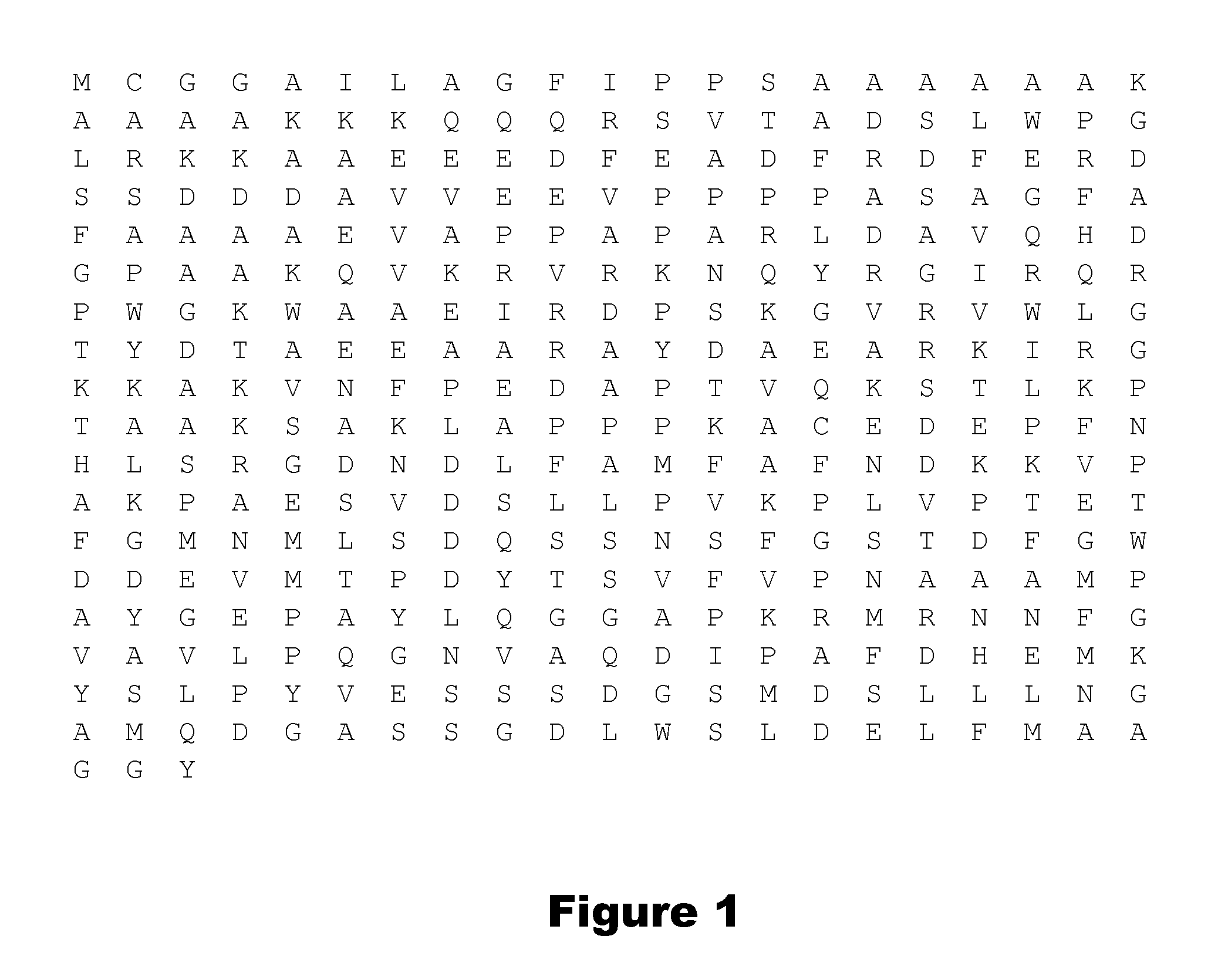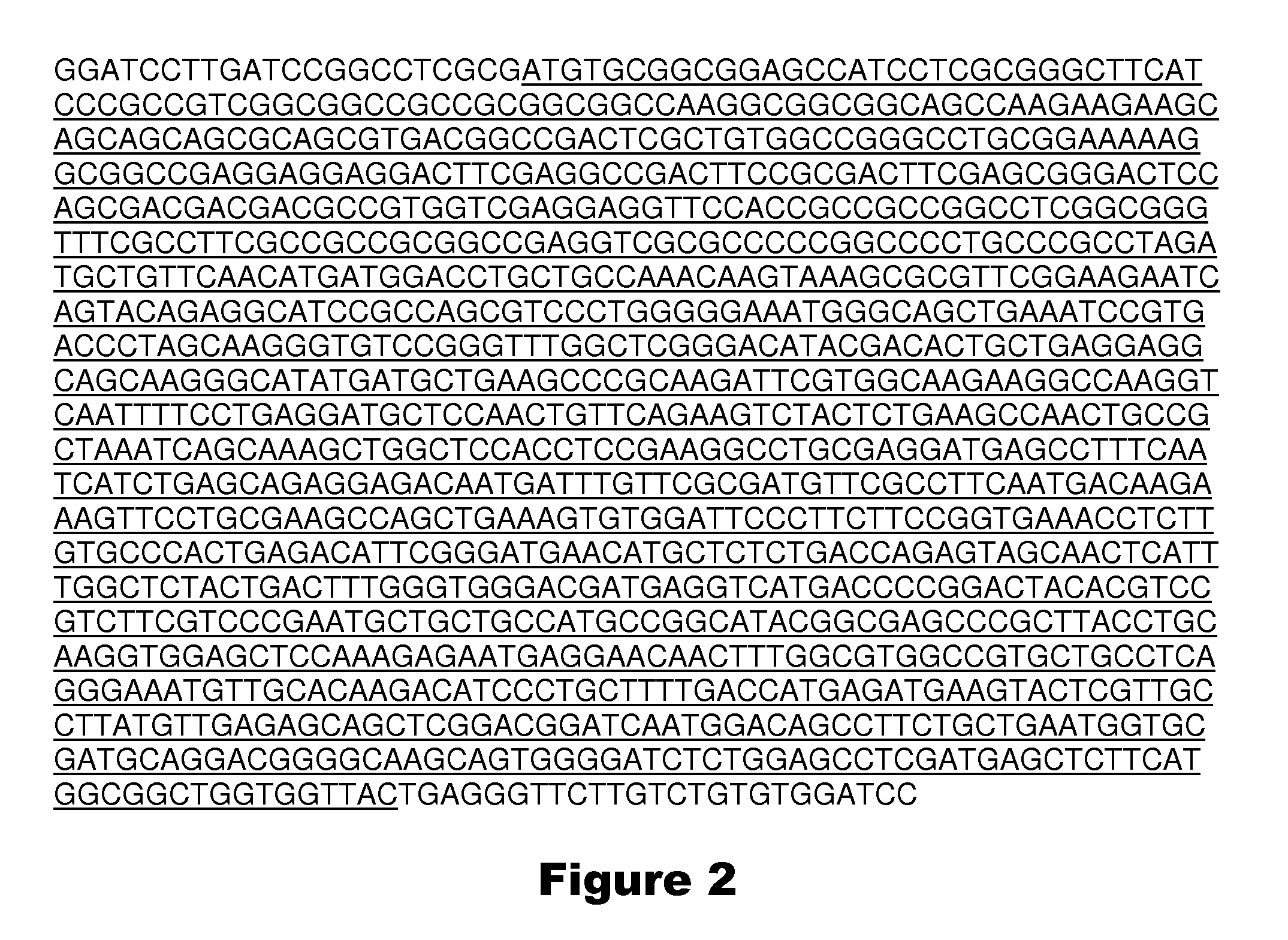Transgene construct to improve Fusarium head blight resistance in wheat and barley
a technology of fusarium and construct, which is applied in the field of transgenic plants with improved resistance to fusarium head blight in wheat and barley, can solve the problems of increasing the number of illnesses in humans and animals, significant yield loss and grain contamination, and increasing the number of people affected by fhb. , to achieve the effect of increasing the resistance of plants, especially wheat, and increasing the resistance to fhb
- Summary
- Abstract
- Description
- Claims
- Application Information
AI Technical Summary
Benefits of technology
Problems solved by technology
Method used
Image
Examples
example 1
Obtaining Full-Length cDNAs
[0080]Full-length wheat for TaERF7-1 was synthesized by DNA2.0 (Menlo Park, Calif.) having the DNA sequence shown in FIG. 2.
Plasmid Construction
[0081]The constitutive maize Ubi1 promoter (Christensen and Quail, 1996, ibid) was used for expression of the chimeric gene Ubi:ERF). Control constructs were generated in which the Ubi promoter drives the expression of the GUS gene. The GUS marker provides indication of the correct expression of each transgene and also provides a transgenic plant that is identical to experimental plant in every way except for the TaERF7-1 coding sequence to serve as control for comparison in the FHB interactions. The full-length cDNAs were assembled into the pACH17 expression cassette in which the cDNA was expressed by the maize Ubi1 promoter. The transgene was configured so that the primary transcript will contain a spliceable Ubi1 intron. All the transgene constructs were independently co-transformed into the scab-susceptible whe...
example 2
[0084]The TaERF1 construct of Example used in Example 1 for the transformation of wheat was used to transform barley.
[0085]Plants of the two-rowed malting barley cultivar Conlon or the European cultivar Golden Promise were grown in a greenhouse at 21-26° C., 16 / 8 h (light / dark) photoperiod supplied by sodium halide lamps or in a growth chamber at 16-20° C., 16 / 8 h (light / dark) photoperiod supplied by a mixture of fluorescent and incandescent lights (150 W / m). Immature embryos (2-4 mm in length) were harvested and cultured using the methods of Manoharan and Dahleen [2002. Genetic transformation of the commercial barley (Hordeum vulgare L.) cultivar Conlon by particle bombardment of callus. Plant Cell Rep 21:76-80), the contents of which are incorporated by reference herein. Culture media containing elevated levels of copper and boron and a reduced level of iron relative to standard Murashige and Skoog (1962. A revised medium for rapid growth and bioassays with tobacco tissue culture....
PUM
| Property | Measurement | Unit |
|---|---|---|
| Electrical resistance | aaaaa | aaaaa |
| Responsivity | aaaaa | aaaaa |
Abstract
Description
Claims
Application Information
 Login to View More
Login to View More - R&D
- Intellectual Property
- Life Sciences
- Materials
- Tech Scout
- Unparalleled Data Quality
- Higher Quality Content
- 60% Fewer Hallucinations
Browse by: Latest US Patents, China's latest patents, Technical Efficacy Thesaurus, Application Domain, Technology Topic, Popular Technical Reports.
© 2025 PatSnap. All rights reserved.Legal|Privacy policy|Modern Slavery Act Transparency Statement|Sitemap|About US| Contact US: help@patsnap.com


